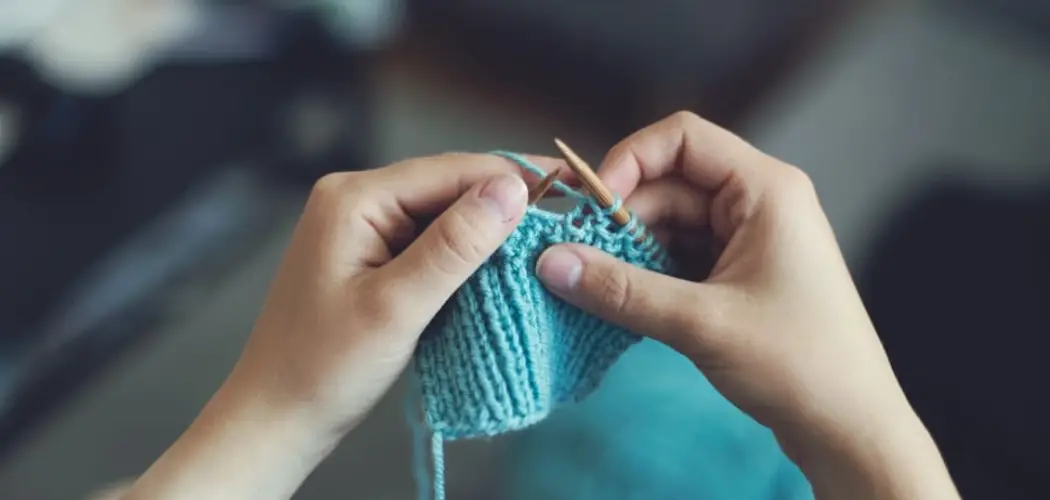Cross stitch is a beloved and timeless craft that allows enthusiasts to create intricate and colorful designs on fabric. While mastering the art of stitching itself is essential, knowing how to attach your finished cross stitch piece to fabric is equally important to showcase your hard work.
Whether you’re planning to frame your masterpiece, turn it into a decorative pillow, or incorporate it into other sewing projects, the attachment process is a crucial finishing touch.

In this article, we will guide you through the step-by-step process of how to attach cross stitch to fabric, offering tips and techniques to ensure a professional and polished outcome.
From selecting the right fabric and preparing your cross stitch for attachment to choosing the appropriate tools and methods, you’ll soon have the skills and knowledge to display your cross stitch creations with pride and sophistication.
Importance of Attaching Cross Stitch to Fabric
Cross stitch is a popular form of embroidery that has been around for centuries. It involves creating small X-shaped stitches on fabric to create intricate and beautiful designs. However, attaching cross stitch to fabric is not just about creating decorative pieces; it serves an important purpose as well.
One of the main reasons why attaching cross stitch to fabric is important is durability. Cross stitch creates a strong and sturdy bond between the thread and fabric, making it less likely to fray or come apart over time. This is especially important for items that will be used frequently, such as clothing or household decor.
Additionally, attaching cross stitch to fabric adds an extra layer of protection. By covering the back of the fabric with stitches, it helps prevent snags and tears from occurring. It also provides stability to the fabric, which is beneficial for items that will be washed or handled often.
Moreover, attaching cross stitch to fabric allows for more creativity and versatility in designs. With a strong bond between the thread and fabric, you can experiment with different patterns and stitches without worrying about them falling apart.
In terms of practicality, attaching cross stitch to fabric also serves as a guide for stitching. By creating a grid of stitches on the fabric, it helps maintain an even and consistent pattern throughout the piece.
Lastly, attaching cross stitch to fabric adds value to the final product. Whether it’s a handmade gift or something you intend to sell, a neatly attached cross stitch design can make all the difference in its overall appearance and perceived worth.
10 Methods How to Attach Cross Stitch to Fabric
1. Sewing
Sewing is the most common and traditional way to attach cross stitches to fabric. To do this, use a needle and thread that matches the color of your fabric. Start by threading the needle with a length of thread that is long enough for your project.
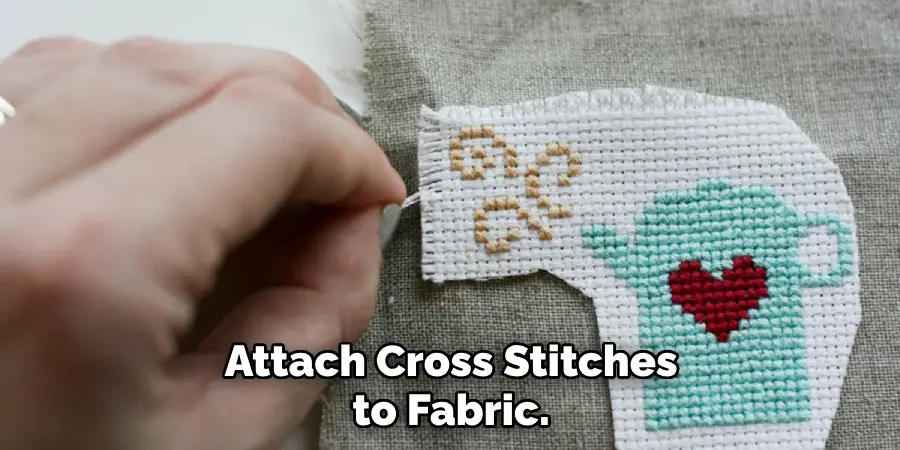
Then, stitch through each hole in the cross-stitch pattern, using small backstitches to secure it in place. Once you have finished stitching, tie off the thread on the back side of the fabric and trim any excess thread.
2. Glue
Using glue is another easy way to attach cross stitches to fabric. Simply apply a thin layer of craft glue or fabric glue onto the back side of your cross-stitch pattern and press it firmly into place on the fabric. Allow it to dry completely before handling it further.
3. Heat Transfer Vinyl
Heat transfer vinyl (HTV) is a great option if you want to add a professional-looking finish to your project. First, cut out your desired design from HTV using an electronic cutting machine such as a Cricut or Silhouette Cameo 3. Then, iron or press the HTV onto your fabric following the manufacturer’s instructions for best results.
4. Fusible Webbing
Fusible webbing is another great option for attaching cross stitches to fabric without sewing or gluing. This method involves using an adhesive webbing that can be ironed onto fabrics, making it ideal for quick projects where sewing isn’t an option. To use this method, simply cut out your desired shape from fusible webbing and iron it onto the wrong side of your fabric before adding your cross-stitch pattern on top of it.
5. Embroidery Hoop
An embroidery hoop can also be used to attach cross-stitch patterns to fabrics without sewing or gluing them down permanently. To do this, first, secure your fabric in an embroidery hoop so that it is taut and smooth before adding your desired design on top of it with embroidery floss or yarn in whatever colors you choose. Once you have finished stitching, remove the hoop and trim any excess threads before displaying or gifting your project!
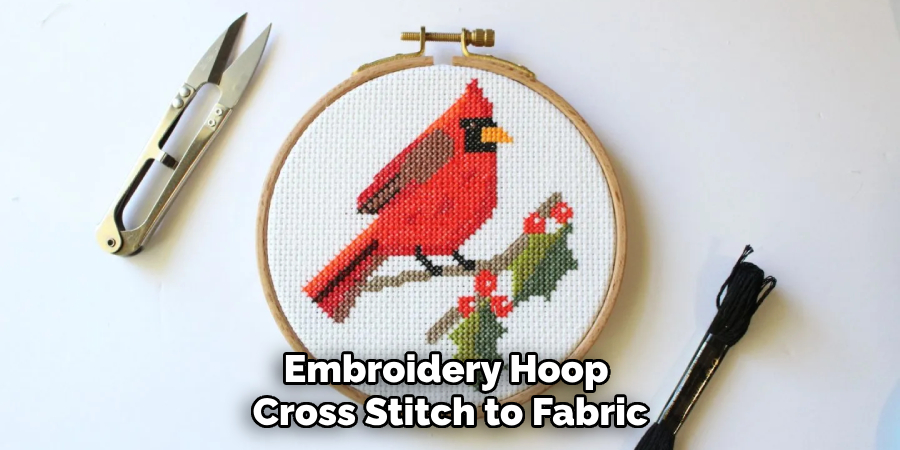
6. Stitch Witchery
Stitch witchery is a fusible bonding material that can be used instead of glue or sewing when attaching cross-stitch patterns to fabrics without damaging them in any way!
To use this method, simply cut out pieces of Stitch Witchery that are slightly larger than each area you wish to cover with a cross stitch pattern and then iron them onto the wrong side of your chosen fabric before adding your stitches on top with embroidery floss or yarn in whatever colors you choose!
7. Fabric Paint
Fabric paint can also be used as an alternative method for attaching cross stitches to fabrics without having to sew them down permanently! To do this, first outline each area you wish to cover with a cross-stitched design using either acrylic paint markers or permanent markers before filling in each area with whichever type of paint you choose! Once dry, add your stitches over top with embroidery floss or yarn in whatever colors you choose!
8. Button Attachment
Button attachment is another creative way to attach cross stitches without having to sew them down permanently! All you need for this method are some buttons that match both the size and color scheme of your project, along with some hot glue, which will act as an adhesive between them and hold everything together securely!
Simply place one button at each corner of each area where you wish to add a stitched design, and then use hot glue around their edges before adding stitches over the top with embroidery floss or yarn in whatever colors you choose!
9. Ribbon Embroidery
Ribbon embroidery is another interesting technique for attaching cross stitches without having to sew them down permanently! To do this method, all you need are some ribbons in various widths and lengths along with some basic hand sewing skills – simply baste one ribbon around each area where you wish to add a stitched design before adding stitches over the top with embroidery floss or yarn in whatever colors you choose!
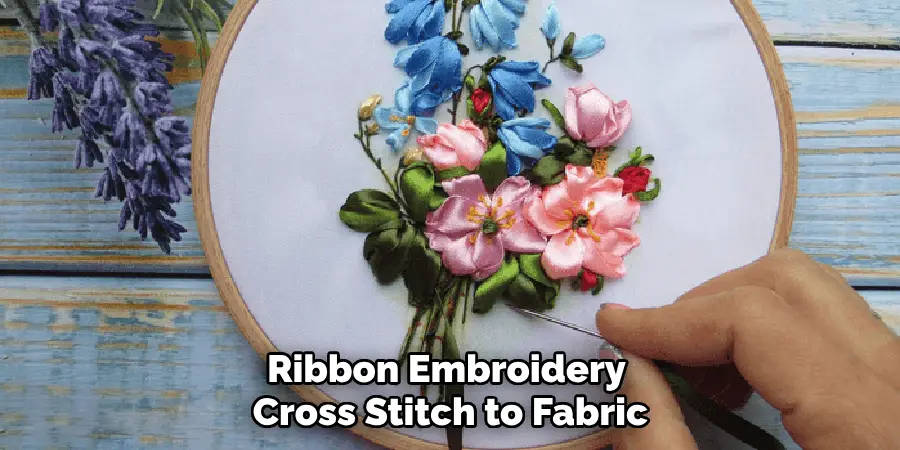
The ribbons will act as both decorative elements as well as stabilizers, which will help keep everything together securely once completed!
10. Adhesive Backed Foam Sheets
Adhesive-backed foam sheets are another great option for attaching cross stitches without having to sew them down permanently – they provide extra stability while also giving projects added dimensionality due to their foam core structure!
Simply cut out shapes from adhesive-backed foam sheets that match up with each area where you wish to add a stitched design before adhering them directly onto the back of your chosen fabric with no sewing required. Once dry, add stitches overtop using embroidery floss or yarn in whatever colors you choose!
Things to Consider When Attaching Cross Stitch to Fabric
When it comes to attaching cross stitch to fabric, there are a few things you should keep in mind. These considerations will not only help ensure that your cross stitch stays securely in place, but also add to the overall appearance of your project.
Type of Fabric:
The type of fabric you use can greatly impact the outcome and durability of your cross stitch. Sturdy fabrics like canvas or evenweave are ideal for attaching cross stitch as they provide a strong base for the stitches to be secured onto. On the other hand, delicate fabrics like silk or satin may not hold up well and could lead to fraying or distortion of the design.
Thread Quality:
Using high quality thread is crucial when it comes to attaching cross stitch to fabric. Cheap or low-quality thread may break easily, making your stitches unstable and prone to coming loose. It is recommended to use embroidery floss specifically designed for cross stitching.
Needle Size:
Choosing the right needle size is important as it can affect the tension of your stitches on the fabric. A larger needle will create larger holes in the fabric, making it easier for the stitches to come loose. On the other hand, a smaller needle may create too much tension and cause the fabric to pucker or distort.
Starting Point:
Deciding where to start your cross stitch is another consideration that can impact the final outcome. It is recommended to start in the center of your design and work outwards, as this will create a more balanced and symmetrical appearance.
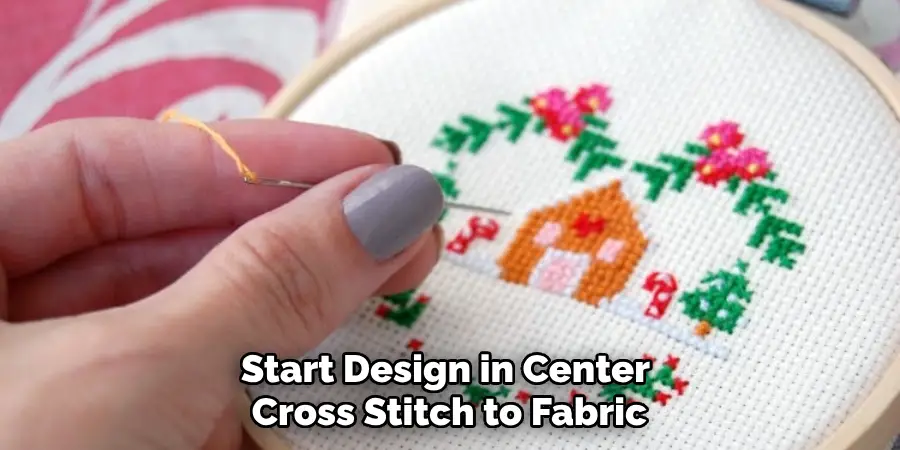
Conclusion
To sum up, cross stitching is an enjoyable and rewarding hobby that offers a meaningful way to give back to the community. It’s important to make sure you use the right materials and techniques in order to properly attach your cross stitch project to fabric. And while it may take some trial and error, there are plenty of resources out there that can help.
With a bit of patience and practice, you’ll soon find yourself presenting your finished piece with pride! Take some time today to research more about how to attach cross stitch to fabric so you can create beautiful, one-of-a-kind works of art for years to come!

